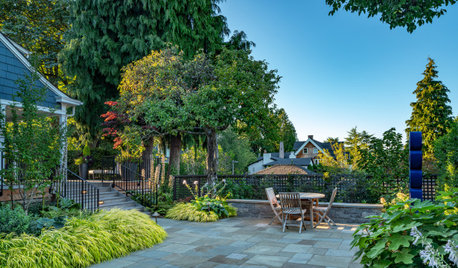What I learned this winter
rennfl
12 years ago
Related Stories

FUN HOUZZEverything I Need to Know About Decorating I Learned from Downton Abbey
Mind your manors with these 10 decorating tips from the PBS series, returning on January 5
Full Story
FEEL-GOOD HOME12 Very Useful Things I've Learned From Designers
These simple ideas can make life at home more efficient and enjoyable
Full Story
GARDENING GUIDESHow I Learned to Be an Imperfect Gardener
Letting go can lead to a deeper level of gardening and a richer relationship with the landscape. Here's how one nature lover did it
Full Story
GARDENING GUIDESLearn the Secret to Bigger and Better Roses
Grow beautiful roses using both ordinary and unusual soil amendments
Full Story
GARDENING AND LANDSCAPINGBe a Citizen Scientist to Help Wildlife, Learn and Have Fun Too
Track butterflies, study birds, capture stars ... when you aid monitoring efforts, you’re lending Mother Nature a hand
Full Story
GARDENING FOR BUTTERFLIESA Quick-Start Guide to Bird-Watching for Fun and Learning
Set out some seed and grab your field guide. Bird-watching is an easy, entertaining and educational activity for the whole family
Full Story
DECORATING GUIDES10 Design Tips Learned From the Worst Advice Ever
If these Houzzers’ tales don’t bolster the courage of your design convictions, nothing will
Full Story
MOST POPULAR15 Remodeling ‘Uh-Oh’ Moments to Learn From
The road to successful design is paved with disaster stories. What’s yours?
Full Story
LANDSCAPE DESIGNLearn Your Garden’s Microclimates for a Resilient Landscape
Reduce your water demand and learn the basis of planting the right plant in the right place
Full Story
MOTHER’S DAYWhat We've Learned From Mom About Home
Share cherished memories as Houzzers recall the special traits, insights and habits of their mothers
Full StorySponsored






rennflOriginal Author
PerrenialGirl
Related Professionals
Ballwin Landscape Architects & Landscape Designers · Ilchester Landscape Architects & Landscape Designers · Kyle Landscape Architects & Landscape Designers · Lowell Landscape Architects & Landscape Designers · Richmond Heights Landscape Architects & Landscape Designers · Bridgeport Landscape Contractors · Cliffside Park Landscape Contractors · Framingham Landscape Contractors · North Canton Landscape Contractors · Red Oak Landscape Contractors · Rockland Landscape Contractors · Wareham Landscape Contractors · Yukon Landscape Contractors · East Norriton Landscape Contractors · South Lyon Driveway Installation & Maintenancemdahms1979
luvidaho_2010
rennflOriginal Author
patrick51
greedygh0st
rennflOriginal Author
luvidaho_2010
patrick51
rennflOriginal Author
cpawl
rennflOriginal Author
Ren_Flowers
cpawl
greedygh0st
penfold2
mdahms1979
penfold2